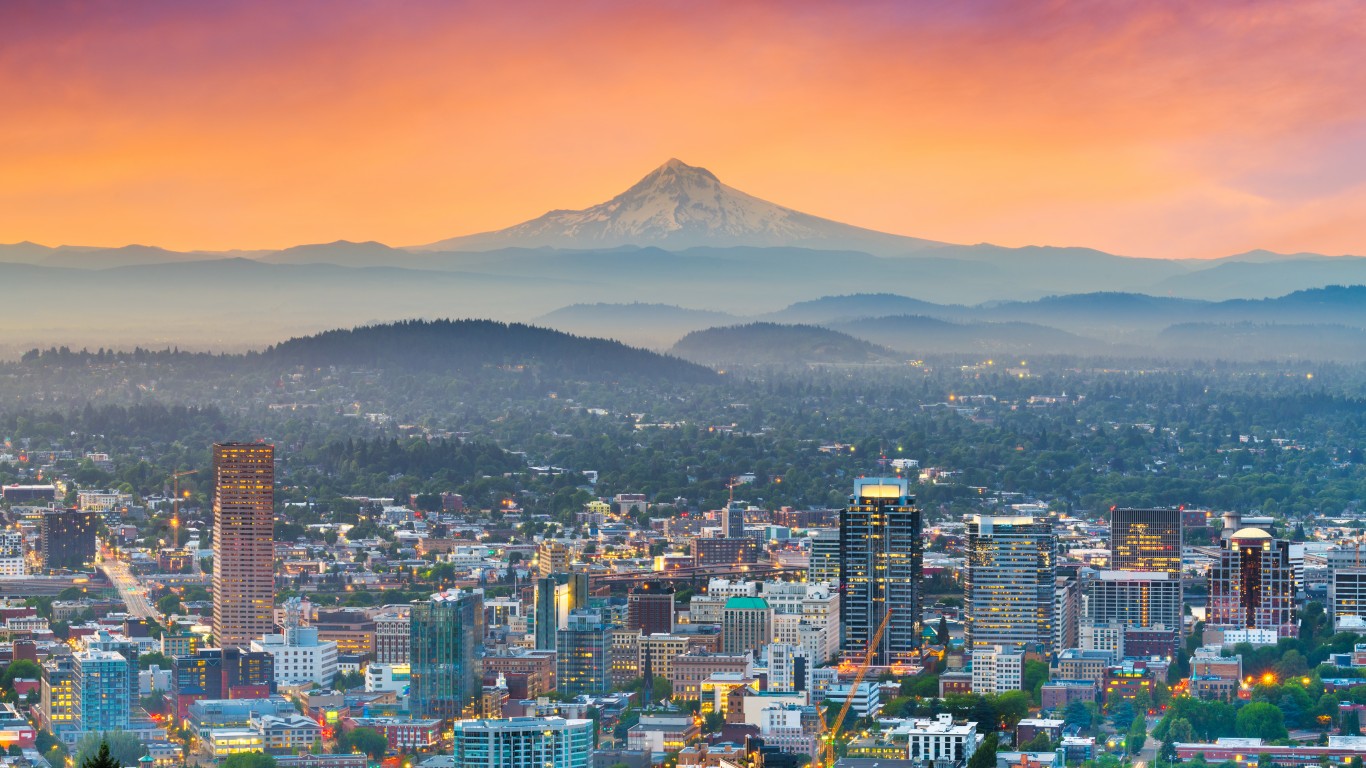
“Foodie”—“a person having an avid interest in the latest food fads”–Merriam Webster Dictionary
What makes a good city for food fads? One answer has to be restaurants. Another has to be stores where people can find an extremely wide variety of food. But, are these high-end foods, and expensive ingredients? Or do gloried versions of fast food places qualify? And, there is diversity. The types of cuisine run a range from American to Thai to French.
Everyone who enjoys fine dining knows that cities like New York, San Francisco, and Seattle are playgrounds for foodies — particularly those who have the dough to support high-quality eating habits. In a ranking of best foodie cities, then, what edge would Midwestern hubs like Cincinnati or Grand Rapids have? According to financial consultancy site WalletHub, the answer is: affordability.
24/7 Tempo reviewed the results of a recent WalletHub study evaluating the 182 most populated cities in the country (adding two of the most populated cities in each state, where necessary) by 29 relevant metrics in two key categories: a combination of diversity, accessibility, and quality, and the aforementioned affordability.
Among the metrics used were the cost of groceries and of restaurant meals; the number of restaurants, food trucks, and grocery stores per capita; the presence of Michelin-starred restaurants; and — a sign of the times — the percentage of residents who are fully vaccinated.
While New York, San Francisco, Seattle, and other cities well-known for their restaurant culture (San Francisco, Las Vegas, Miami, etc.) all scored in the top 10 for diversity, accessibility, and quality, they did less well in affordability — in fact, the Big Apple took 181st place out of 182 cities — ultimately ceding the number one spot to a city known both for its food and its comparatively friendly pricing: Portland, Oregon.
Why Portland, Oregon? Here are the details:
> Total score: 70.77
> Affordability: #56 highest out of 182 cities
> Diversity, accessibility, and quality: #3 highest out of 182 cities
Click here to see America’s 35 best cities for foodies.
Are You Still Paying With a Debit Card?
The average American spends $17,274 on debit cards a year, and it’s a HUGE mistake. First, debit cards don’t have the same fraud protections as credit cards. Once your money is gone, it’s gone. But more importantly you can actually get something back from this spending every time you swipe.
Issuers are handing out wild bonuses right now. With some you can earn up to 5% back on every purchase. That’s like getting a 5% discount on everything you buy!
Our top pick is kind of hard to imagine. Not only does it pay up to 5% back, it also includes a $200 cash back reward in the first six months, a 0% intro APR, and…. $0 annual fee. It’s quite literally free money for any one that uses a card regularly. Click here to learn more!
Flywheel Publishing has partnered with CardRatings to provide coverage of credit card products. Flywheel Publishing and CardRatings may receive a commission from card issuers.
Thank you for reading! Have some feedback for us?
Contact the 24/7 Wall St. editorial team.


